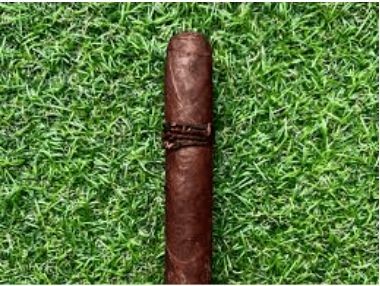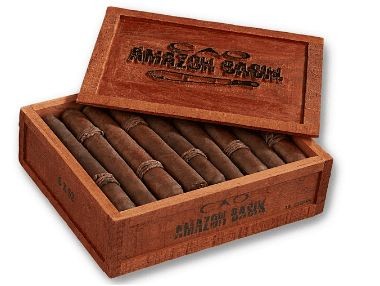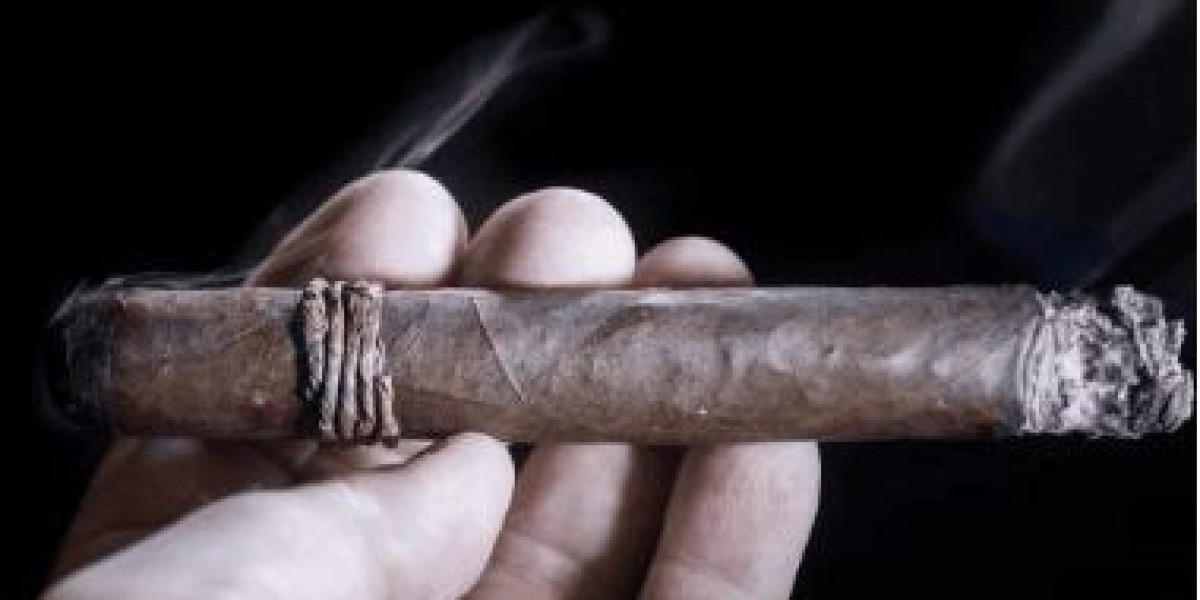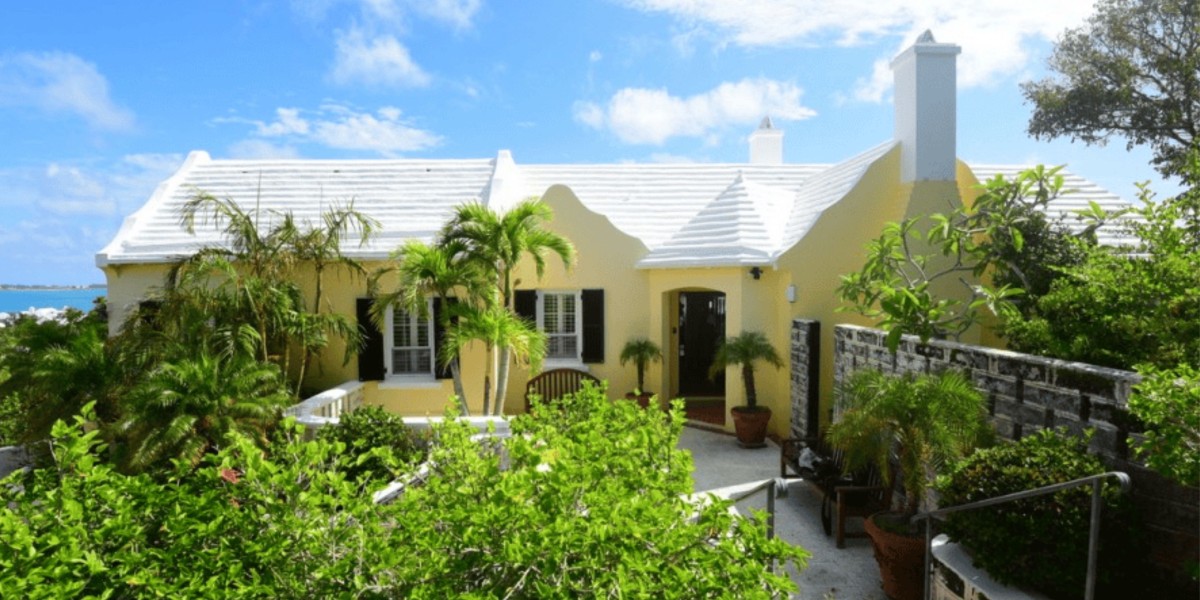This cigar primarily used Bragança tobacco, which is cultivated in the Amazon jungle and picked just once every three years.
More details on the unusual route taken to get the Amazon Basin to market may be found in our report about the General Cigar Co. stand at the IPCPR show.
These seeds are planted anywhere there is sunshine, in contrast to conventional tobacco farms where the plants are placed in tidy rows. After being gathered, the leaves are manually wrapped into tubes known as carottes, where they naturally ferment for six months using a method akin to that of Andullo tobacco.
After they have matured, they must be transported by hand to a river, where they are placed in canoes and rowed to the mainland. They must then be driven to a port and exported to Nicaragua, where they are manufactured, a process that takes four to six weeks.
The remaining combination included a Nicaraguan binder and an Ecuadorian Sumatra wrapper. It was rolled at STG Estelí in Nicaragua and released in a single 6 x 52 size. It is regarded as a limited edition release.
Almost a year ago, I wrote the following in my initial assessment of the CAO Amazon Basin:
I was eager to see what General had in store for the CAO Amazon Basin, having been taken aback by how much I enjoyed the Cohiba Nicaragua. A lot of hype was created around the special tobacco in the blend, and although I liked the cigar overall, I did not find the flavors to be all that distinctive. Without a doubt, the first two thirds are the greatest, and if the final third had been less punishing, the score would have been higher overall. Nevertheless, the cigar's overall flavor profile is pleasing enough to suggest it.

Review of Cigar: CAO Nicaragua, the origin country of the Amazon Basin
Manufacturer: STG Estelí
Wrapper: Sumatra from Ecuador
Organizer: Nicaragua
Filler: Nicaragua Brazil
Dimensions: 6 Inches
Ring Size: 52
Toro: Vitola
MSRP: $9.25 ($166.50 for 18-piece boxes)
Release date: August 14, 2014
Cigars Released: None at All
Quantity of Cigars Review of Smoked: 1
Just like when I reviewed it initially, the CAO Amazon Basin's wrapper is a striking reddish-brown hue with some noticeable veining and discernible oil. It seems reasonably smooth to the touch and, when squeezed, becomes little more spongy than I had anticipated.
The wrapper has an aroma of earth, leather, dark chocolate, oak, and sweet raisins. The cold pull has flavors of coffee beans, milk chocolate, almonds, and the same oak and sweet raisins.
Anise, dark chocolate, leather, oak, and creamy peanut flavors are the first to stand out on my tongue while tasting the CAO Amazon Basin. The spice flavor fades after around ten puffs. The finish has the same strong raisin sweetness that I detected in the wrapper's aroma and the cold draw, and the retrohale adds a distinct black pepper smell that seems to be getting stronger as the cigar burns down.
The profile of the second half of the CAO Amazon Basin is largely similar to that of the first, although as the cigar burns down into the final third, I do detect an increasingly noticeable buttery popcorn note. Additionally, there is a slight hint of salinity that appears on my lips for a short while but never gets too intense.
Regarding construction, the CAO Amazon Basin has great draw for the duration of the cigar, with just the proper amount of resistance. The burn is a little uneven in the first half, so I have to touch it up, but it evens out nicely after that and I don't have any more issues.
The amount of smoke produced is immediately above average. The overall strength is rather light at first, but by the time I put the nub down with about an inch remaining, it has reached a solid medium.
For the Amazon Basin, CAO Looks to the Brazilian Rain Forest
The newest CAO Amazon Basin cigar looks like something out of a Joseph Conrad novel. It is made with Brazilian tobacco that is farmed in the Amazon rain forest and is transported down the Amazon River by boat before being combined into this limited-edition cigar.
Bragança is the name of the tropical tobacco, which is cultivated using somewhat unconventional techniques. Scandinavian Tobacco Group, the company that owns the brand, claims that because Bragança seedlings are planted a full yard apart, their yield is half that of other tobacco crops. After being culled, the tobacco is fermented for six months in tubes known as carottes, which resemble the condensed cylinders of andullo. The leaves are packed firmly into these tubes.
After that, the tobacco carottes are placed onto a canoe and paddled out of the Amazon River jungle, ultimately making their way from the depths of night to the STG Estelí factory in Nicaragua, which is the production facility for CAO cigars.

This release has a literary feel to it because of the picture of tobacco in a canoe drifting down the Amazon River, but STG thinks the Bragança in the filler gives the cigar a really unique note. The dark Ecuador Sumatra wrapper, Nicaraguan binder, and filler blend of Colombian and Dominican tobacco highlight the Brazilian Bragança in the 6-inch-by-52-ring-gauge CAO Amazon Basin.
The rope-like tobacco that is strung around each cigar to serve as its band is another distinguishing feature that makes the CAO Amazon Basin brand particularly unique. These 18-count boxes of rustic, primitive-looking tropical toros, which retail for $12.99 apiece, began delivering last week. For the US market, just 6,000 boxes have been produced.
For their CAO products, STG has previously employed unique tobaccos. The Amazon Basin series began in 2014 and has since expanded with releases such as CAO Orellana and CAO Fuma Em Corda.
How do you test a cigar?
There's more to inspecting a cigar than just lighting it up and puffing. A ritual of testing cigars, with an emphasis on construction, scent, and the smoking experience itself, has been created by true cigar lovers. Below is a summary of the main procedures for testing a cigar:
The Pre-Smoke Exam: A Tactile and Visual AssessmentVisual Inspection:
Start by giving the cigar a close inspection. The wrapper need to be flawless, devoid of any imperfections or fissures. Make sure the cigar's color is uniform throughout, and make sure the cap is on tight.
The Pinch Test: Squeeze the cigar gently all the way around between your thumb and index finger. It should have some give to it yet still feel sturdy. Squeezing too much should be avoided to prevent damaging the wrapper. A rock-hard consistency could mean the cigar is too wet, while a mushy or spongy sensation could mean it's too dry.Examine the Foot:
The foot is the part of the cigar that has been cut. There should be no big stems or spaces in the tobacco and it should be packed evenly.
The Chilly Pull: Evaluating Airflow
Take a cold draw, or a light puff without lighting the cigar, before lighting it. A small amount of resistance should feel like it's been drawn properly. It could be hard to enjoy the smoke if the draw is too tight. On the other hand, a too loose draw may produce a harsh, scorching smoke.
Illuminating: The Real Exam Starts
The Toast:
Toast the cigar's foot using a suitable cigar lighter, like a single-flame lighter. To ensure even burning, hold the flame just above the foot and turn the cigar carefully. Don't burn the wrapper.
The Initial Puffs:
Inhale slowly and deliberately, taking time to appreciate the first tastes. Expert cigar smokers frequently talk about a nuanced interaction between flavors and scents that changes as you smoke.
Burn and Smoke Production: Pay attention to the smoke production. The cigar should burn evenly and not require frequent relighting; it should be consistent and smooth.
Through the Smoke: A Flavorful Journey
While puffing on the cigar, consider the following:
Taste Profile:
A cigar's flavor can have a lot of subtle variations. Typical descriptions are nutty, spicy, woodsy, earthy, and chocolatey. Expert cigar smokers are able to detect minute changes in flavor throughout the smoking.
Scent:
The cigar's scent ought to be pleasing and harmonizing with its flavor.As you smoke the cigar, take note of how the aroma shifts.
Strength and Body:
The strength of cigars varies, ranging from light to robust. Body describes the richness and fullness of the smoke, whereas strength describes the concentration of nicotine.
Going Above and Beyond: Honing Your Method
You can learn more about the craft of cigar testing as you get experience:
Matching with Drinks:
Some beverages go well with the tastes of cigars. To improve the experience, try pairings with water, old liquor, or even coffee.
Retrohaling:
This cutting-edge method is taking a puff in your mouth, then inhaling a tiny bit of smoke via your nose. The flavor profile may be enhanced, but proceed with caution—gently retrohale to prevent discomfort.
Analysis of Ash:
There are hints regarding the quality of the tobacco and burn found in the color and consistency of the cigar ash. Most people think that an ash that is light gray is preferable.
Recall that evaluating a cigar is an individualized experience. Unwind, enjoy the tastes, and cultivate a personal appreciation for the subtleties of a well-smoked cigarette.



